Novel Application Research on Critical High-Temperature Deformation of Low-Lead Brass Alloy
Abstract
:1. Introduction
2. Materials and Methods
3. Results and Discussion
3.1. Influence of Temperature on Plastic Deformation
3.2. High-Strain and High-Temperature Plastic Deformation Characteristics
3.3. Mechanism of High-Temperature Dezincification
4. Conclusions
Funding
Acknowledgments
Conflicts of Interest
References
- Reed-Hill, R.E.; Abbaschian, R. Physical Metallurgy Principles, 3rd ed.; PWS-KENT: Boston, MA, USA, 1992; pp. 691–692. [Google Scholar]
- Zaretsky, E.B.; Kanel, G.I. Abnormal temperature effects on the dynamic yield stress of alpha-brass. J. Appl. Phys. 2018, 124, 045902. [Google Scholar] [CrossRef]
- Davoodi, A.; Honarbakhsh, S.; Farzi, G.A. Evaluation of corrosion resistance of polypyrrole/functionalized multi-walled carbon nanotubes composite coating on 60Cu-40Zn brass alloy. Prog. Org. Coat. 2015, 88, 106–115. [Google Scholar] [CrossRef]
- Adineh, M.; Doostmohammadi, H.; Raiszadeh, R. Effect of Si and Al on the microstructure, mechanical properties and machinability of 65Cu-35Zn brass. Iran. J. Mater. Sci. Eng. 2019, 16, 21–32. [Google Scholar]
- Sohn, S.; Kang, T. The effects of tin and nickel on the corrosion behavior of 60Cu-40Zn alloys. J. Alloy. Comp. 2002, 335, 281–289. [Google Scholar] [CrossRef]
- Bydalek, A.W.; Kula, A.; Blaz, L.; Najman, K. Analysis of the impact of modifiers on the formation of non-metallic inclusions during continuous casting of CuZn39Pb2 brass. Arch. Foundry Eng. 2019, 19, 21–26. [Google Scholar]
- Suárez, L.; Rodriguez-Calvillo, P.; Cabrera, J.M.; Martinez-Romay, A.; Majuelos-Mallorquin, D.; Coma, A. Hot working analysis of a CuZn40Pb2 brass on the monophasic (β) and intercritical (α + β) regions. Mater. Sci. Eng. A 2015, 627, 42–50. [Google Scholar] [CrossRef]
- Chen, W.; Jia, Y.; Yi, J.; Wang, M.; Derby, Q.; Lei, B. Effect of addition of Ni and Si on the microstructure and mechanical properties of Cu-Zn alloys. J. Mater. Res. 2017, 32, 3137–3145. [Google Scholar] [CrossRef] [Green Version]
- Suksongkrm, P.; Rojananan, S.; Rojananan, S. Bismuth formation in lead-free Cu-Zn-Si yellow brass with various bismuth-tin alloy additions. Mater. Trans. 2018, 59, 1747–1752. [Google Scholar] [CrossRef] [Green Version]
- Humphreys, F.J.; Hatherly, M. Chapter 13 hot deformation and dynamic restoration. In Recrystallization and Related Annealing Phenomena; Elsevier: Pittsburgh, PA, USA, 2004. [Google Scholar]
- McQueen, H.J.; Imbert, C.A.C. Dynamic recrystallization: Plasticity enhancing structural development. J. Alloy. Comp. 2004, 378, 35–43. [Google Scholar] [CrossRef]
- Zhang, Y.; Guo, J.M.; Chen, J.H.; Wu, C.L.; Kormout, K.S.; Ghosh, P.; Zhang, Z.L. On the stacking fault energy related deformation mechanism of nanocrystalline Cu and Cu alloys: A first-principles and TEM study. J. Alloy. Comp. 2019, 776, 807–818. [Google Scholar] [CrossRef]
- Spigarelli, S.; Mehtedi, M.E.; Cabibbo, M.; Gabrielli, F.; Ciccarelli, D. High temperature processing of brass: Constitutive analysis of hot working of Cu-Zn alloys. Mater. Sci. Eng. A 2014, 615, 331–339. [Google Scholar] [CrossRef]
- Ashby, M.F.; Gandhi, C.; Taplin, D.M.R. Perspectives in Creep Fracture; Elsevier: Cambridge, UK, 1983; pp. 1–31. [Google Scholar]
- Wolley, D.J.; Fox, A.G. The embrittlement of leaded and unleaded α + β (60-40) brasses in the temperature range 300 to 500 °C. J. Mater. Sci. Lett. 1988, 7, 763–765. [Google Scholar] [CrossRef]
- Heidersbach, R.H.; Verink, E.D. The dezincification of alpha and beta brasses. Corrosion 1972, 28, 397–418. [Google Scholar] [CrossRef]
- Park, C.G.; Kim, J.G.; Chung, Y.M.; Han, J.G.; Ahn, S.H.; Lee, C.H. A study on corrosion characterization of plasma oxidized 65/35 brass with various frequencies. Surf. Coat. Tech. 2005, 200, 77–82. [Google Scholar] [CrossRef]
- Illarionov, A.G.; Loginov, Y.N.; Stepanov, S.I.; Illarionova, S.M.; Radaev, P.S. Variation of the structure-and-phase condition and physical and mechanical properties of cold-deformed leaded brass under heating. Met. Sci. Heat Treat. 2019, 61, 243–248. [Google Scholar] [CrossRef]
- Chu, Z.K.; Yu, J.J.; Sun, X.F.; Guan, H.R.; Hu, Z.Q. Tensile property and deformation behavior of a directionally solidified Ni-base superalloy. Mater. Sci. Eng. A 2010, 527, 3010–3014. [Google Scholar] [CrossRef]
- Izumi, O. Intermediate temperature embrittlement and intercrystalline cracking in copper alloys. Bull. J. Jpn. Inst. Met. 1979, 54, 15–22. [Google Scholar] [CrossRef]
- Giacobbe, F.W. Thermodynamic dezincification behavior of brass during annealing. J. Alloy. Comp. 1993, 202, 243–250. [Google Scholar] [CrossRef]
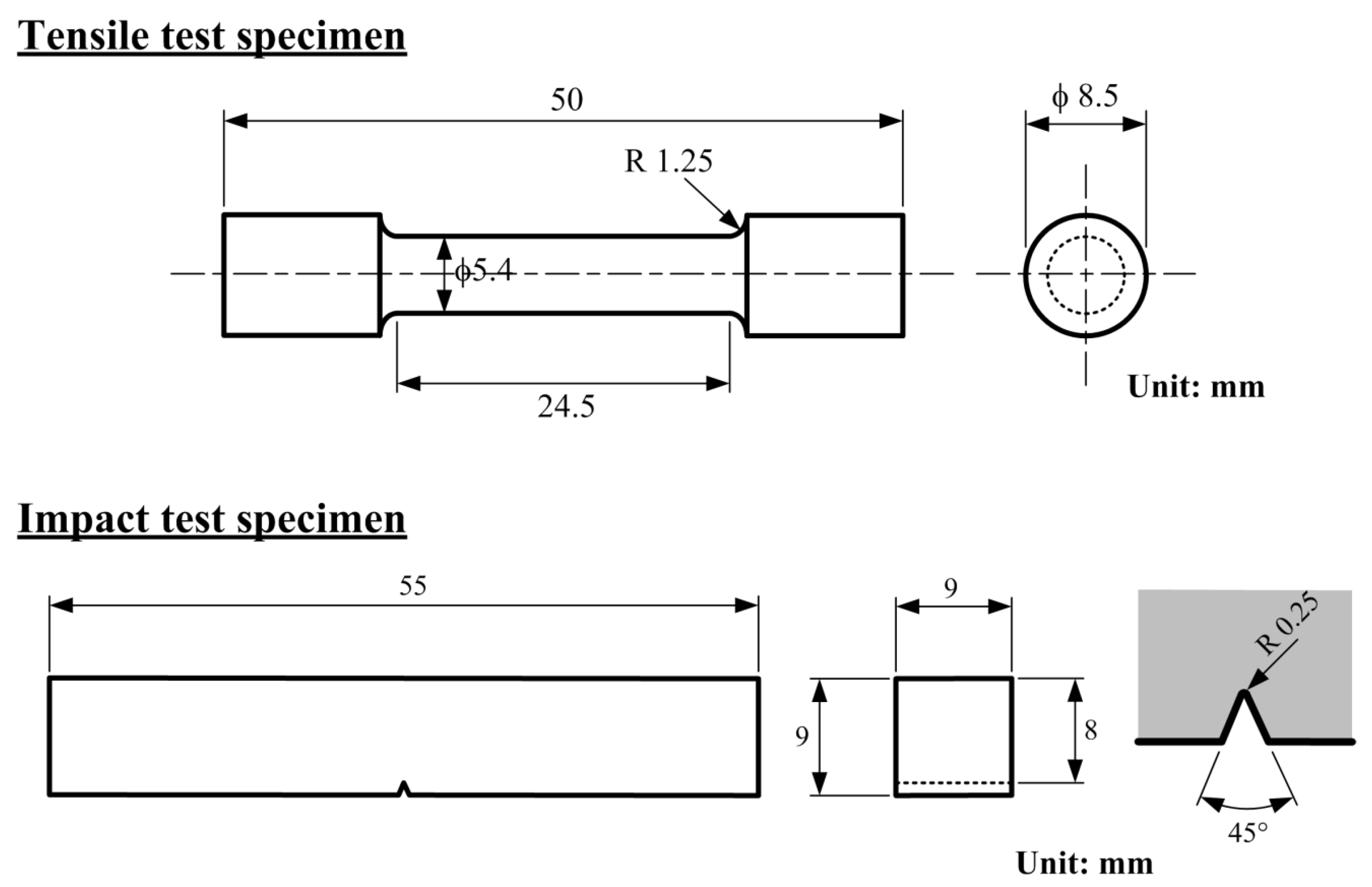
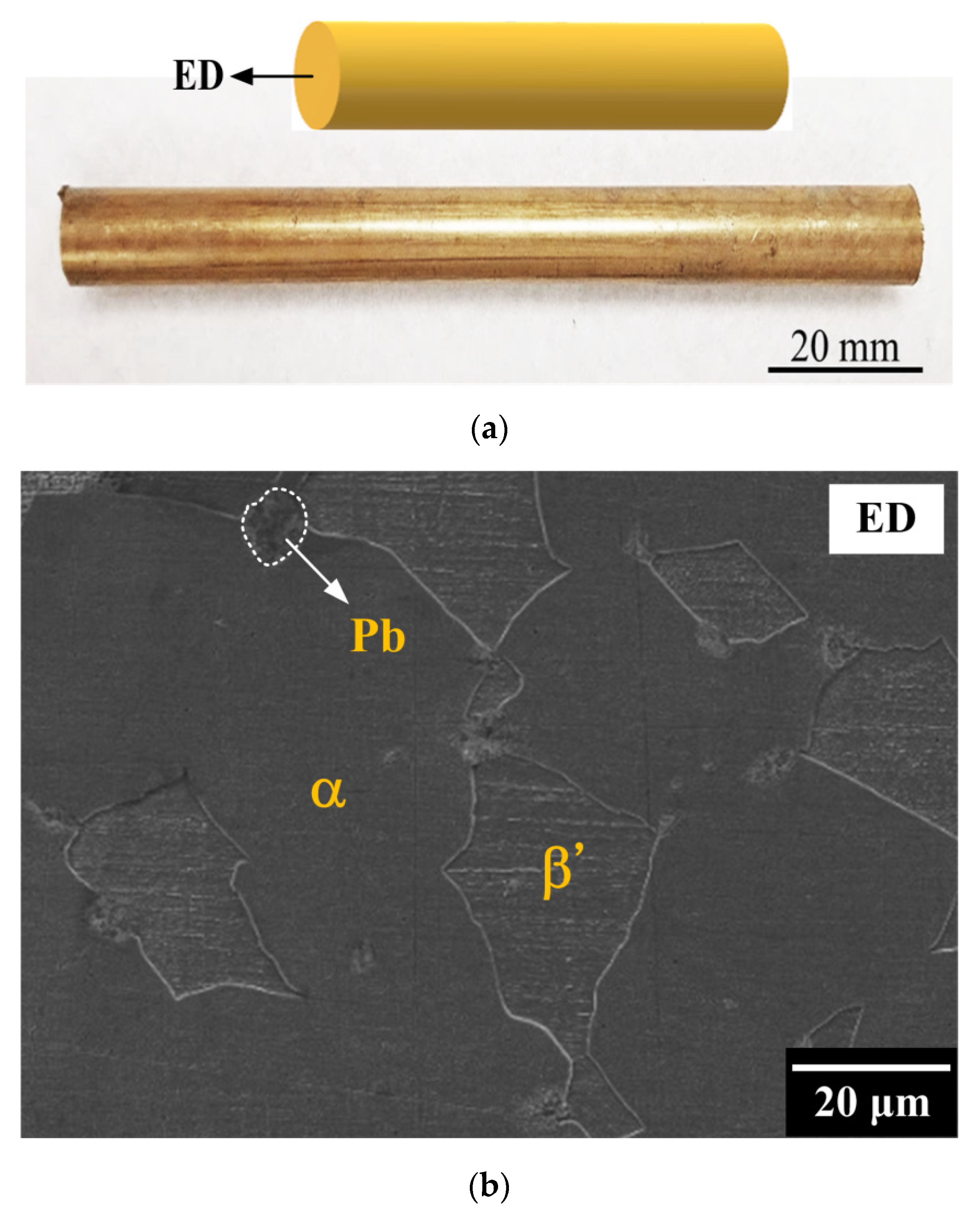


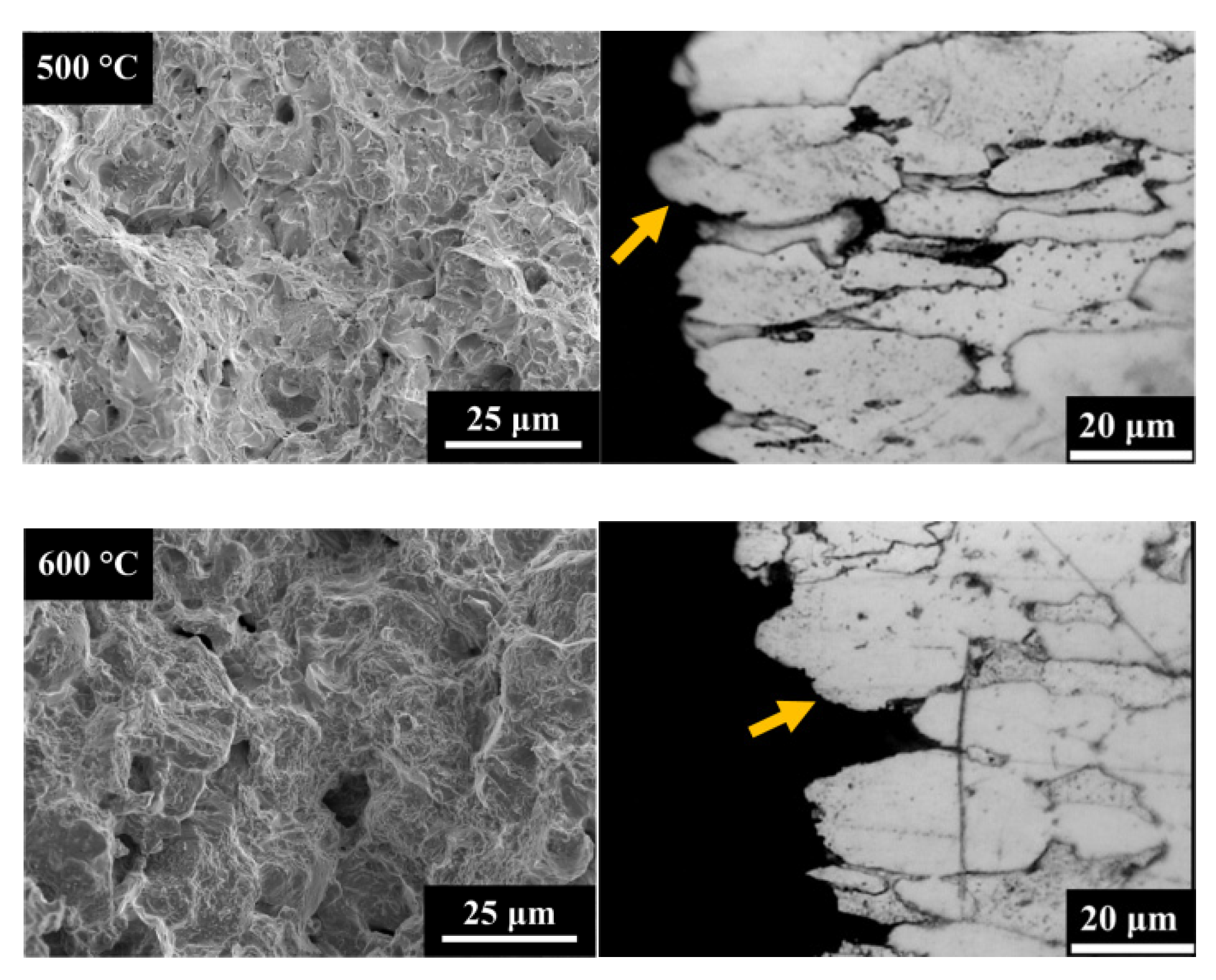

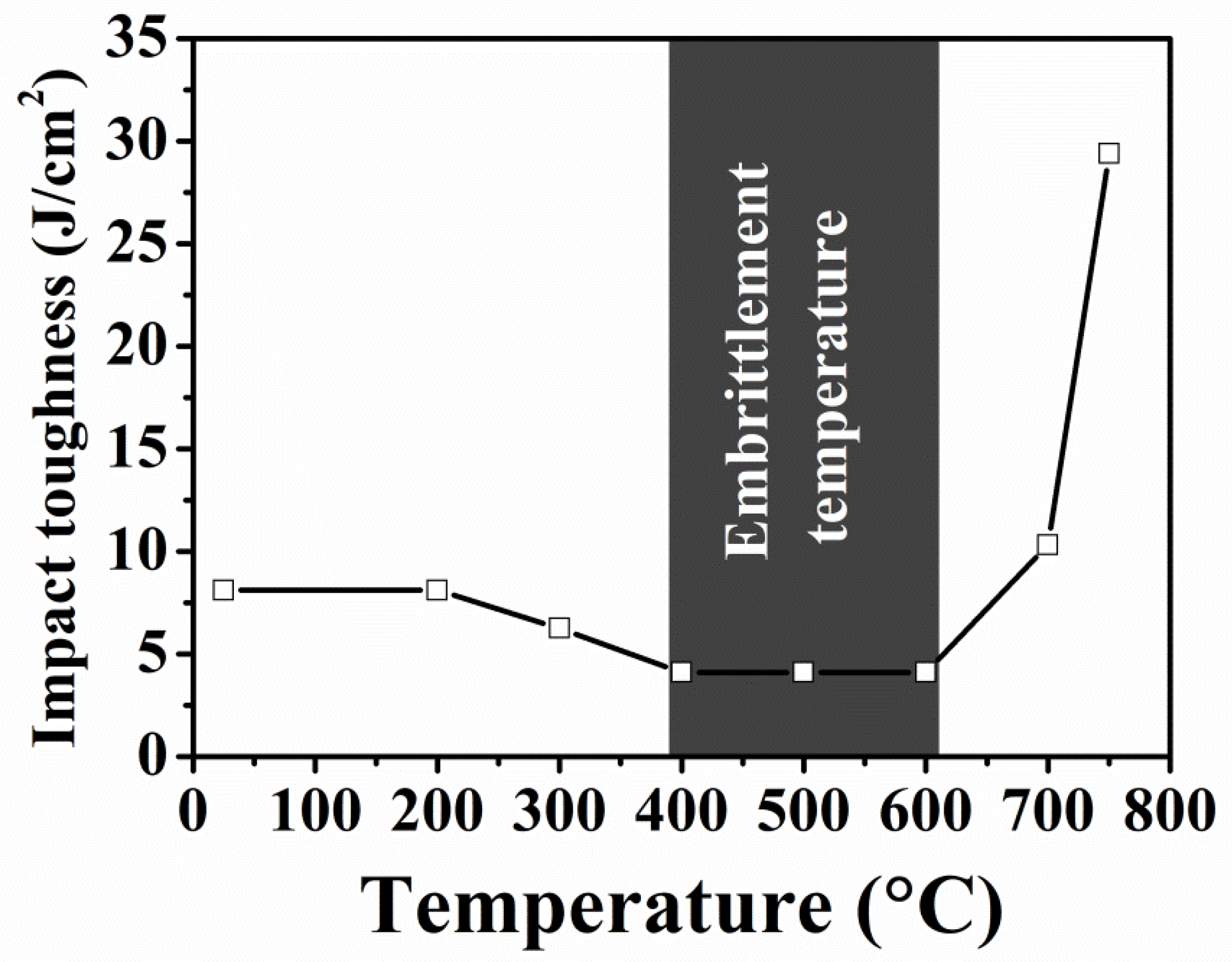

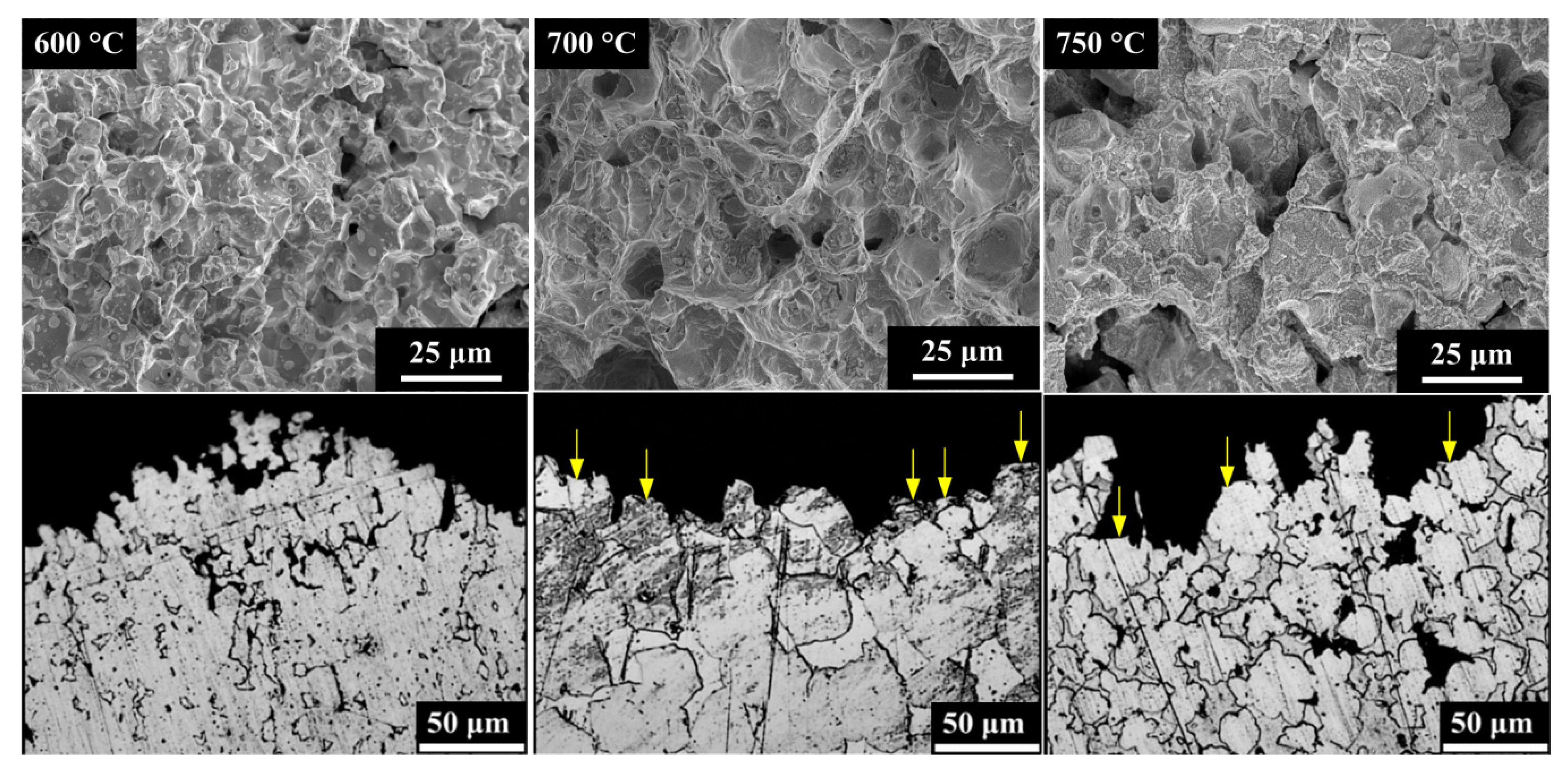

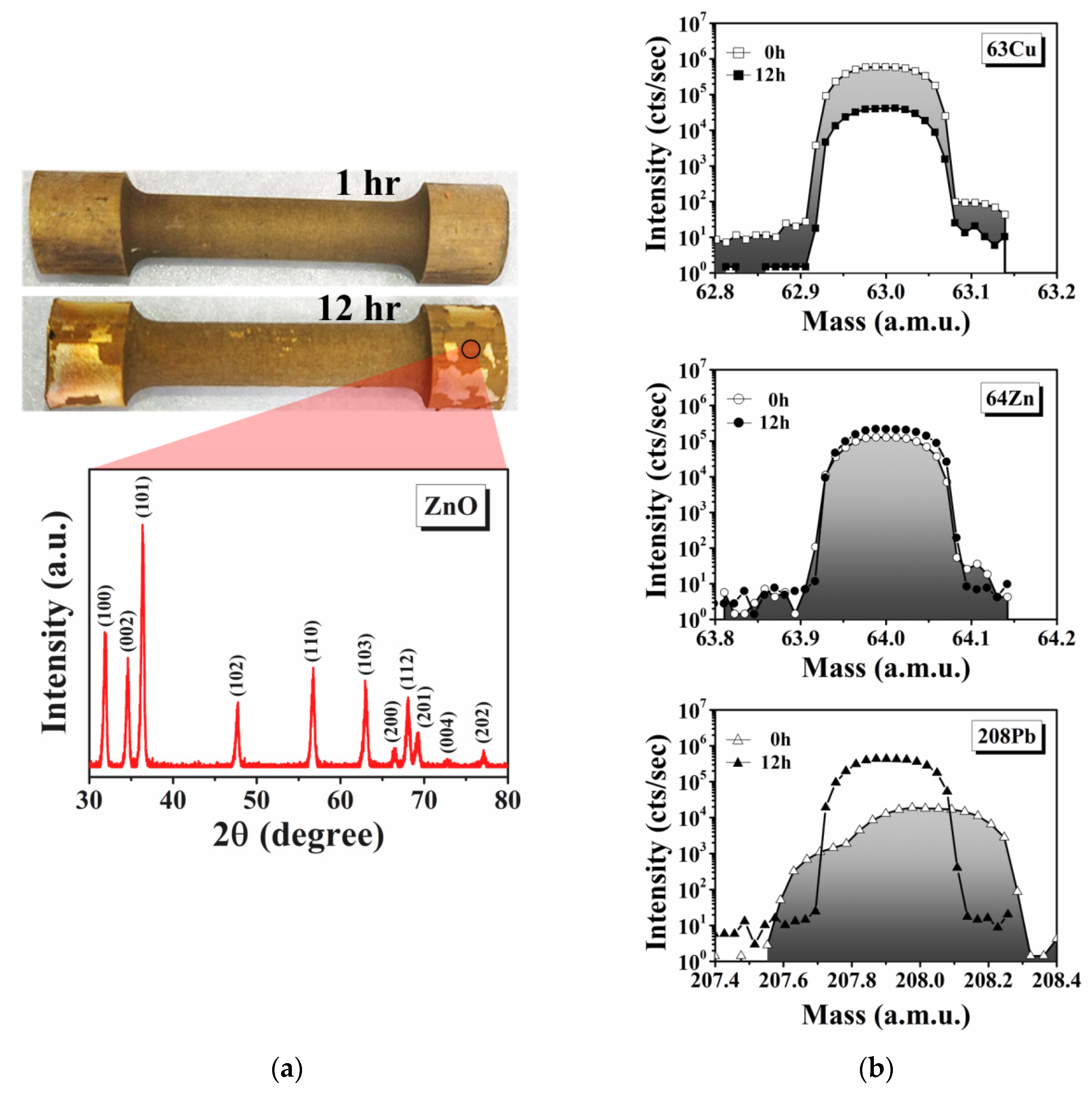
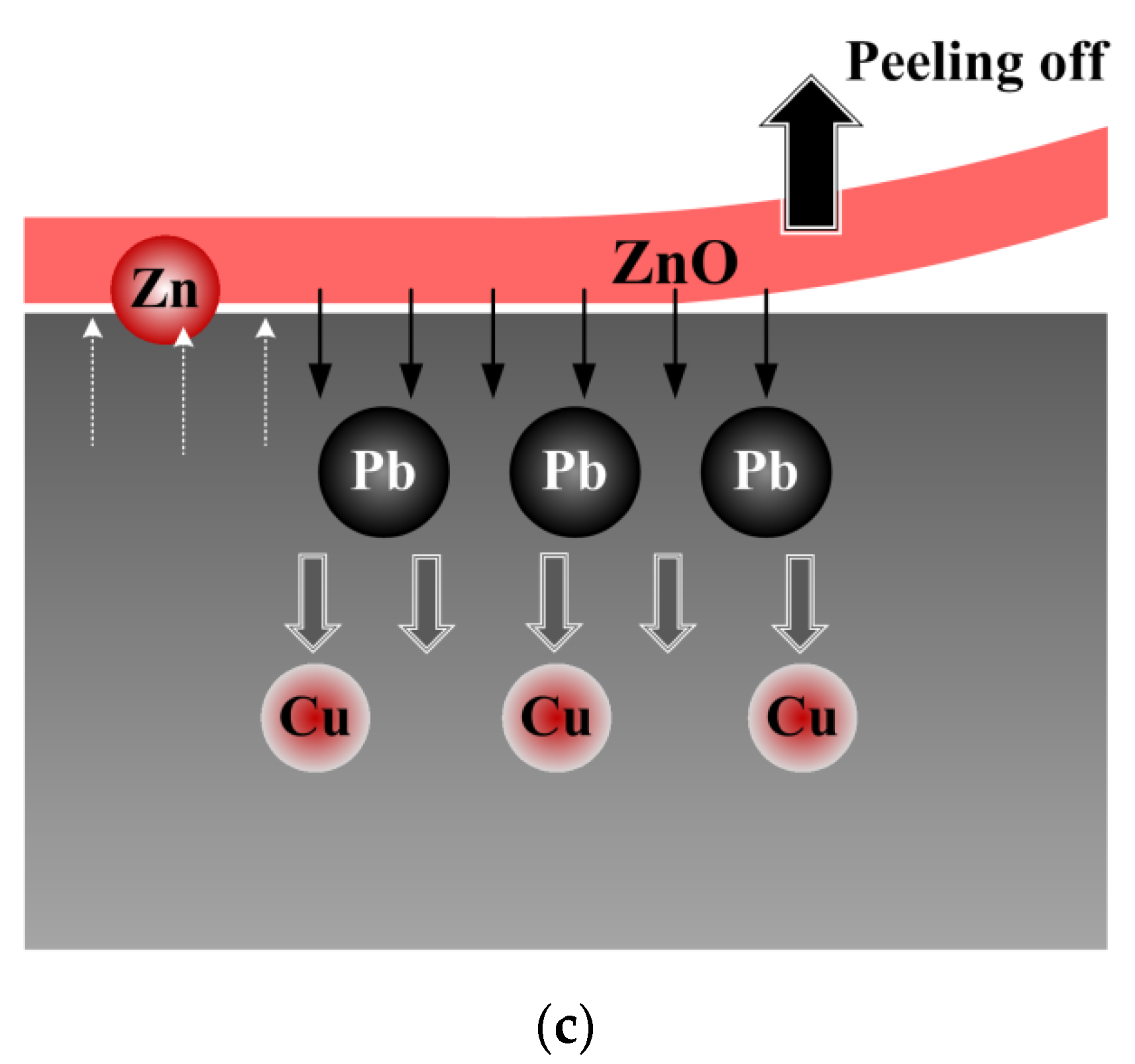
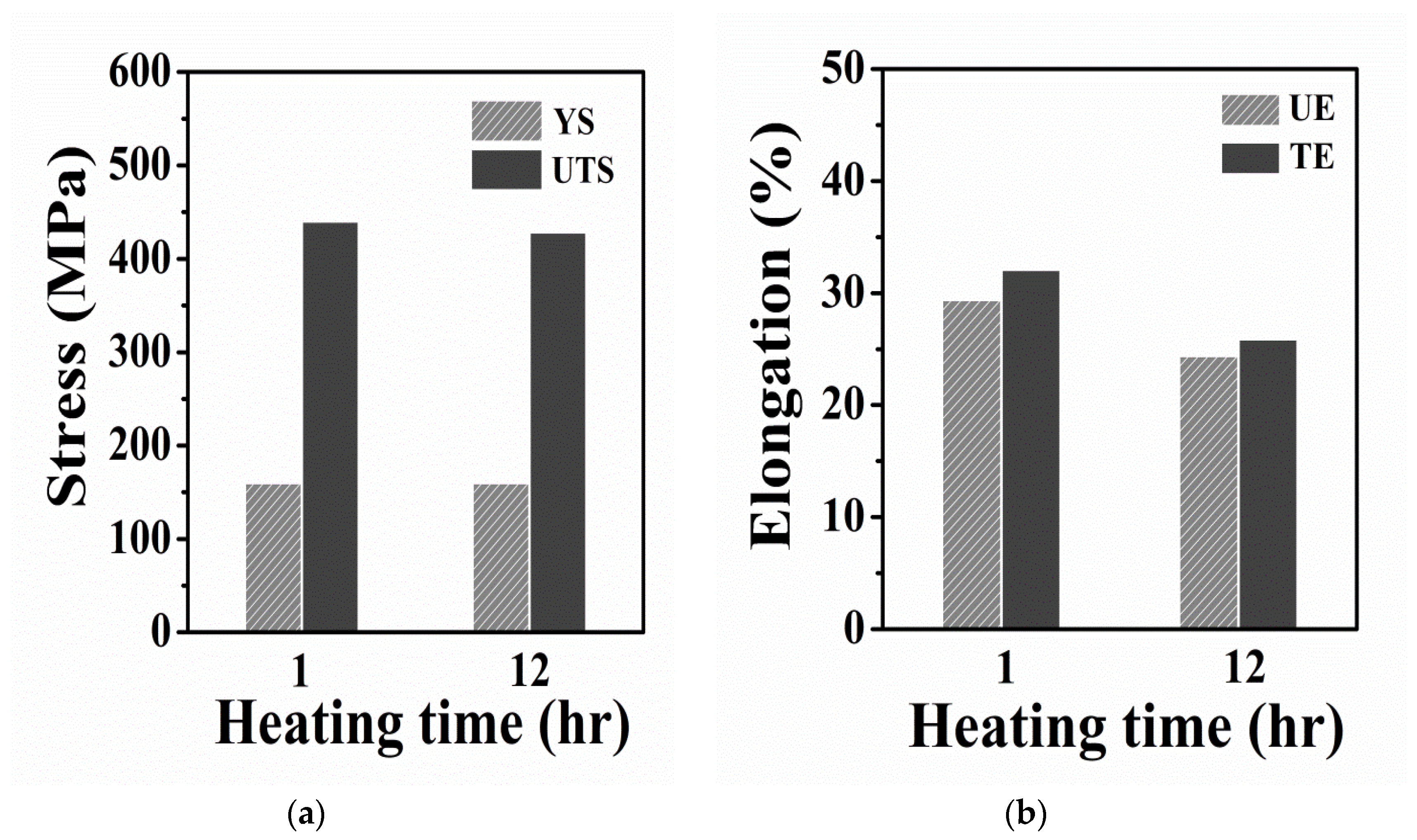
| Element | Zn | Pb | Fe | Sn | Ni | Cu |
|---|---|---|---|---|---|---|
| wt.% | 38.10 | 3.30 | 0.22 | 0.21 | 0.12 | Bal. |
© 2020 by the author. Licensee MDPI, Basel, Switzerland. This article is an open access article distributed under the terms and conditions of the Creative Commons Attribution (CC BY) license (http://creativecommons.org/licenses/by/4.0/).
Share and Cite
Chen, K.-J. Novel Application Research on Critical High-Temperature Deformation of Low-Lead Brass Alloy. Metals 2020, 10, 722. https://doi.org/10.3390/met10060722
Chen K-J. Novel Application Research on Critical High-Temperature Deformation of Low-Lead Brass Alloy. Metals. 2020; 10(6):722. https://doi.org/10.3390/met10060722
Chicago/Turabian StyleChen, Kuan-Jen. 2020. "Novel Application Research on Critical High-Temperature Deformation of Low-Lead Brass Alloy" Metals 10, no. 6: 722. https://doi.org/10.3390/met10060722
APA StyleChen, K.-J. (2020). Novel Application Research on Critical High-Temperature Deformation of Low-Lead Brass Alloy. Metals, 10(6), 722. https://doi.org/10.3390/met10060722





